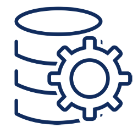Lead Prioritization Models for Insurance
Many carriers still rely on “first-in-first-out” lead prioritization models or methods, but is this the best/most efficient way to convert customers? Agents and carriers stuck in this outdated strategy are losing thousands of high-intent leads to their competitors. In this article, we’re focusing on how third-party data limits agencies to effectively score leads. Instead, insurance agencies need to access the power of first-party intent data to identify and close high-intent buyers.
What Attracts People to Insurance Companies?
Before we dig into lead prioritization, let’s take a step back to consider, what actually attracts people to insurance companies? Is it the funny commercial they saw during the Superbowl? The personalized email campaign that said the right thing at the right time? Hitting it off with an agent who sat next to you at that wedding?…
Or, is it a combination of all of the above, and then some? (Spoiler: It’s always a combination.) These days, a customer needs to see a company’s branding/advertising at least twenty times before conversion happens. And the common denominator in all of these interactions is the trust factor. If a company succeeds in building trust with a potential customer, they’ve created a high-intent shopper. Then, what it comes down to is the right price point and service offering.
Assuming your marketing is working – you’re likely driving a lot of traffic to your website and, hopefully, a lot of digitally submitted quotes. But not all quotes are created equal – some are from high-intent shoppers ready to make a purchase – others are from window shoppers and bots.
So, this begs the big question — what’s the best way to prioritize these leads? Based on several years and hundreds of millions of applications analyzed, we argue it is all about understanding user intent and prioritizing leads accordingly.
Lead Prioritization Model and Lead Generation
Most of the companies we speak with are doing one of two things. Using a combination of demographic information and 3rd party data to feed machine learning models or just starting to think about lead prioritization models.
Even the more advanced companies are using a “first-in-first-out” approach to follow up with applicants and inbound quotes. But what if you knew that Mary, who abandoned the application, was +4x more likely to purchase a policy than the average applicant? Or, better yet, that Paul was 6.5x less likely to purchase a policy than the average applicant? Who would you call first? I know who I would…
With that, we suggest a different approach – one based on each individual user’s unique on-site behavior.
Understanding how a user engages with your digital applications is (more often than not) more telling of their intent than the answers they submit during the application. Again, not all quotes are created equal. But the behavioral breadcrumbs left behind by an individual users digital interactions are highly predictive of their intent.
ForMotiv specializes in collecting digital behavioral data and using behavioral data science to understand each users propensity to purchase a policy. Our 1st party behavioral data and intent scoring is incredibly powerful on its own, and even more powerful when combined with internal predictive modeling. Similarly to how agents can read behavioral “tells” when selling policies in person, ForMotiv picks up on these “tells” digitally and gives real-time insight into buying intent.
Several Top 10 Life and P&C carriers are leveraging our proprietary behavioral dataset and scoring mechanism to segment users into granular buying cohorts and arming marketing teams and agents with
Looking for something more in-depth about customer experience in insurance? Head over here.
The Pros of Lead Prioritization Models
Using first-party intent data is proven to boost marketing efficiently in insurance companies. Here’s how.
Improved lead scoring: Using the right data collection method helps your agents discover which users are high-intent buyers, who are twice as likely to buy, vs. window shoppers, who are four times less likely to buy. Both online and offline data helps identify and prioritize leads for marketers and agents.
Optimized remarketing efforts: Remarketing dollars wasted on low intent customers from third-party data might as well be thrown away. Improved lead scoring with first-party data helps marketers target the high intent and high lifetime value customers
Faster conversions: Behavioral Intelligence is like clickstream data on steroids, giving insights into user behavior while it’s happening and leverage it real-time via API to nudge high-intent customers to complete their application.
Knowing which lead sources to hierarchize: First-party data makes it easier to determine what lead source is converting the quickest, where users are struggling to complete forms, where they hesitate, and where they abandoned ship.
The Cons
Even good things can come with a downside. And since we want to give you an honest picture, it’s important to note that there are cons of intent-data lead prioritization models. The core of the problem stems from the misuse of data. Here’s what we mean.
It’s not face-to-face: It’s true. The old way of doing sales via in-person, face-to-face relationship building is always ideal because it’s a faster way to build trust on both ends. But growing a business means keeping up with the changing pace. The next best thing we have to meet customer expectations is first-party intent data.
Misinterpretation of first-party intent: So let’s say you start collecting first-party data — great! … Now what? If you’re not working with a company that helps interpret data and develop machine learning models, your data could seem like a foreign language. And if your marketing department doesn’t know what to do with the data, it won’t be worth the cost.
Effectively Scoring and Tracking Leads
Luckily, companies like ForMotiv can help you collect intent data and interpret the results for optimized lead prioritization models and scoring. ForMotiv removes prioritization barriers by giving companies access to next-generation adaptive customer journeys tailored to their individual users. It’s done by collecting each user’s digital body language while they fill out online forms and applications. Then, the data is analyzed in real-time with intelligent machine learning to accurately predict the user’s intent.
Here’s what this all means for marketers:
- Access to next-generation behavioral clickstream data (with zero PPI)
- Accurate channel attribution
- Exit-intent detection
- Identifying crucial UX issues
- Understanding digital body language and user intent
Does your current lead scoring strategy do that? Schedule a 30-minute call and we’ll show you what ForMotiv can do for your company.





